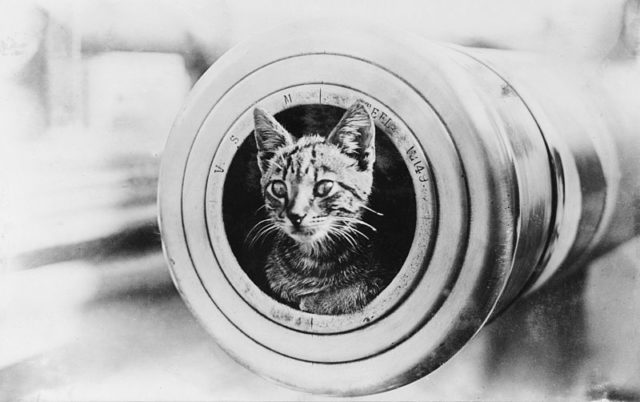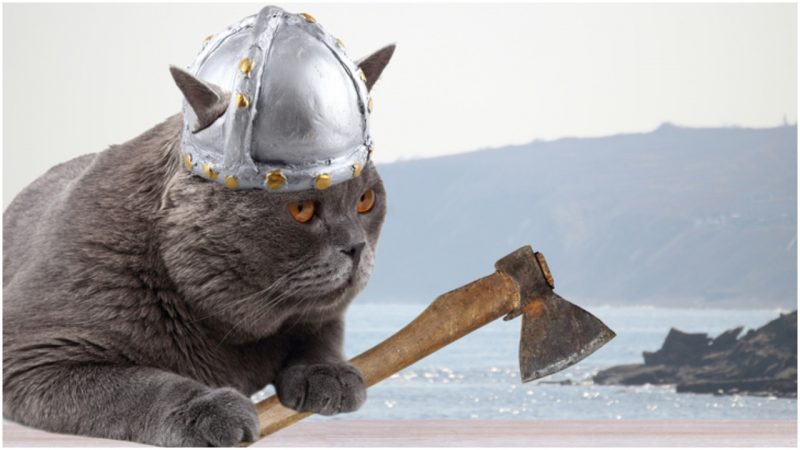Nowadays it seems like cats are all the rage. Everywhere you look, it seems like there is a new cat meme or a new cat story that people are obsessed with and want to hear more about.
People are into cats, and for some, it truly seems like a newer phenomenon that was developed for and by the internet-savvy younger generation.
But apparently, obsession with and love for cats is far from a new thing. The Vikings on their quest to conquer the world also brought along the furry felines on their ships.
In a recent scientific study, scientists have revealed that cats were worthy passengers on many of the Viking ships in their attempt to conquer the world.
Through the first significant study of ancient cat DNA, scientists have been able to ascertain that felines were domesticated in both the Near East and Egypt around fifteen thousand years ago.
This was thousands of years before cats became domesticated and a mainstay in most American homes. The percentage of cats in American homes now outnumbers the percentage of dogs that are domesticated and housed within American homes.
There was testing done in Oxford, UK and through that testing, it was ascertained that cat origins do go far back and can certainly be traced to those that accompanied the Vikings.
The specimens used for the study were found in more than thirty archaeological sites located throughout Europe, the Middle East, and Africa.
All of the specimens that archaeologists were able to recover from these various sites across the world have helped scientists put together some missing pieces about the origination of these domestic cats that most of us have or have grown to love over the years.
Given just how popular cats are in this day and age especially its surprising to see just how little knowledge we have about where they came from and what the beginning of their timeline looked like.

Looking through the various strands of DNA that scientists were able to extract from the several sites that they went to, it was discovered that it is more likely than not that cats experienced not only one but two waves of expansion during the early periods of their history.
The first wave is not something that should be unfamiliar to most people. When the researchers looked at the genetic information of the cats that they were researching, they focused on mitochondrial DNA, which is the genetic information that is passed on to offspring only from the mother.
Through this research, they ascertained that wild cats that were from the Middle East and wild cats that were in the eastern Mediterranean shared a fairly similar mitochondrial lineage.
From this, researchers were able to ascertain that small wild cats spread throughout early agricultural communities because they were attracted to the mice that resided there because the mice wanted the grain.
It is also more likely than not that the farmers who owned these lands were happy to see the cats, as they served to deter or get rid of the mice population that could really put a dent in the grain supply at times.
What is exciting is that thousands of years after the cats were immersed within the agricultural communities, research has pointed to the fact that there is yet another and a separate mitochondrial connection between the cats that emanated from the cats in Egypt to the cats that emanated from Eurasia and Africa.
The second wave of mass expansion that cats experienced can be traced back to the ancient sea-faring people, such as farmers, sailors, and, most surprisingly, the Vikings.
While it may seem surprising at first that all of these ancient people would want felines aboard their ships for these long journeys.
It actually does make sense if you think about it because they would bring the cats aboard so that the cats could keep the rodents in check and the ship would not become overrun.
This maternal DNA connection was discovered at a Viking site in northern Germany and is most likely dated at a time between the eight century and the eleventh centuries.
What is of note in all of this is that the findings of this research and testing has not been presented in a peer-reviewed paper just yet. There could still be more room for expansion or to change what exactly the findings are with more investigation, as these are as of now just the initial findings of the researchers.
A stronger analysis of the results that were found could yield a different result, but one cannot be sure until the initial findings are looked into more closely.
The whole study, in general, is a very exciting development because as of now we have a great idea of the history of the domestication of dogs, the other popular home pet.
But weirdly enough there is just so little actually known about the domestication of cats, which are an extremely popular house pet, Science Alert reported.
It will be very exciting to see just what exactly researchers are able to ascertain as a result of this discovery about ancient felines and how they came to be domesticated, since they are such an important part of modern culture.
It will be exciting to see how all of the different kinds of cats came into being and how an animal that seemed to derive from such big and violent animals came to be fairly tame house pets that are present in the household of most American families today.
